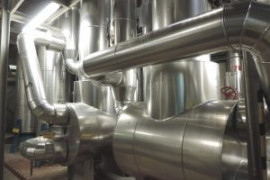
Thermal conductivity vs. resistance
Thermal conductivity is a physical quantity particular to each own material. It characterizes the ability of the material thereof to transfer heat by conduction. On the contrary, when a material has a very low conductivity, it is called resistance. The lambda term is often used to speak of the thermal conductivity.
The battle against conductivity
Steel is a material that conducts heat well. For remember, it is essential to use an assembly of materials made of steel (imposed), an insulator (a polyurethane foam and a hardened protective sleeve. This set, which forms a pre-insulated pipe, provides a very reduced overall thermal conductivity vis-à-vis the bare steel.
Optimizing insulation
To prevent the wear that might be caused by water and the soil moisture, the PU foam is protected with a sheath. This preserves the effectiveness over the long term. Indeed, over the network gets, the more the thermal conductivity increases, which implies a loss of heat in the form of energy.
Respect NF EN
The EN 253 standard requires a maximum conductivity limit 0.0029 W.m-1 K-1. To achieve this level of conductivity, the manufacture of PU foam must be made with cyclopentane. In the past it was made from Freon gas, and CO2. PU foam insulation was so much less than today and also more polluting.
Ensure network performance
In general, the conductivity provided by companies specializing in heating networks is 0.0024 W.m-1 K-1 or 0.0027 W.m-1 K-1. However, these values are obtained before aging and laboratory. They are not representative of a real situation and therefore does not represent a relevant commercial argument. Considering a slight margin of difference, the conductivity of the PU foam into the actual conditions of installation and use will lie more around 0.0027 W.m-1 K-1. Anyway, at the time of its commissioning, for a network to be effective, it is necessary to meet a standard of 0,0029W.m-1 K-1.
NB – A high-performance PU foam provides a very high resistance to the factory. The thermal conductivity can be expressed in W.m-1.K-1 and the resistance m.K.W-1.
Image source : Flickr (Alan Levine)







